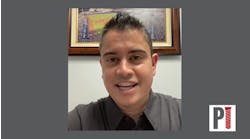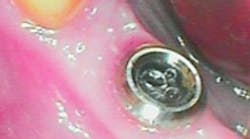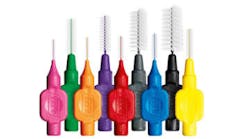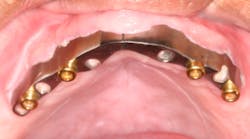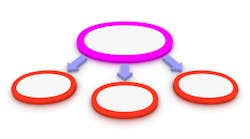Today, there is a huge opportunity for dentists in dental sleep medicine. With more patients being diagnosed with sleep apnea, a background in the management of sleep-disordered breathing allows dentists to provide much-needed treatments to patients and grow their practices.
RELATED |What dental professionals need to know about dental sleep medicine
For the 12 to 18 million adults in the United States who have obstructive sleep apnea, Continuous Positive Airway Pressure (CPAP) is the recommended treatment. Unfortunately, up to half of sleep apnea patients don’t comply with or can’t tolerate the CPAP machine, oftentimes because they find the mask uncomfortable to wear while sleeping. Oral appliance therapy (OAT) — pioneered by dentists — is an effective alternative. OAT uses a “mouth guard-like” device worn during sleep to maintain an open, unobstructed airway. OAT devices prevent the airway from collapsing by either holding the tongue or supporting the jaw in a forward position. Helping drive the adoption of OAT today is a wealth of research that illustrates how it is a very effective clinical treatment for mild to moderate sleep apnea.
RELATED |Research involving novel tooth microphone has potential to propel the field of dental sleep medicine forward
OAT is emerging as a key treatment for sleep apnea and, therefore, more continuing education opportunities are available for dentists to learn about dental sleep medicine. Dental schools, for example, are beginning to offer clinical training courses. Tufts University Dental School recently started a one-year program called Head and Neck Pain and Dental Sleep Medicine. Other dental schools, such as the University of Texas San Antonio and UCLA, are starting to offer mini-residencies or weekend courses in dental sleep medicine. The University of North Carolina School of Dentistry is in the planning stages of creating a one-year program in obstructive sleep apnea under the auspices of its Department of Orthodontics. The independent postgraduate institutes offering continuing dental education have also started to provide training in the field. With several studies now looking at long-term effectiveness of OAT, I expect more dental schools will find space in their curriculum for this important practice.
Dentists who decide to pursue dental sleep medicine can also count on professional associations to provide structure and support. The American Academy of Dental Sleep Medicine — the only nonprofit, professional society dedicated exclusively to the practice of dental sleep medicine — provides members with exclusive educational resources, practice management support, and networking opportunities that help them excel in dental sleep medicine.
Most importantly, dental sleep medicine professionals are needed at the local level. Sleep physicians often complain that they cannot find a local dentist who is well versed in the overall treatment of patients with sleep disordered breathing. By establishing this expertise, dentists can help fulfill a growing need and create more opportunities for personal advancement in dental sleep medicine.
With more continuing education opportunities available than ever before, learning about dental sleep medicine and integrating it into one’s practice is a smart, viable option for dentists. A commitment to further study in the fast-growing field of dental sleep medicine will not only benefit the dental profession but also help people sleep more soundly and live healthier lives.


